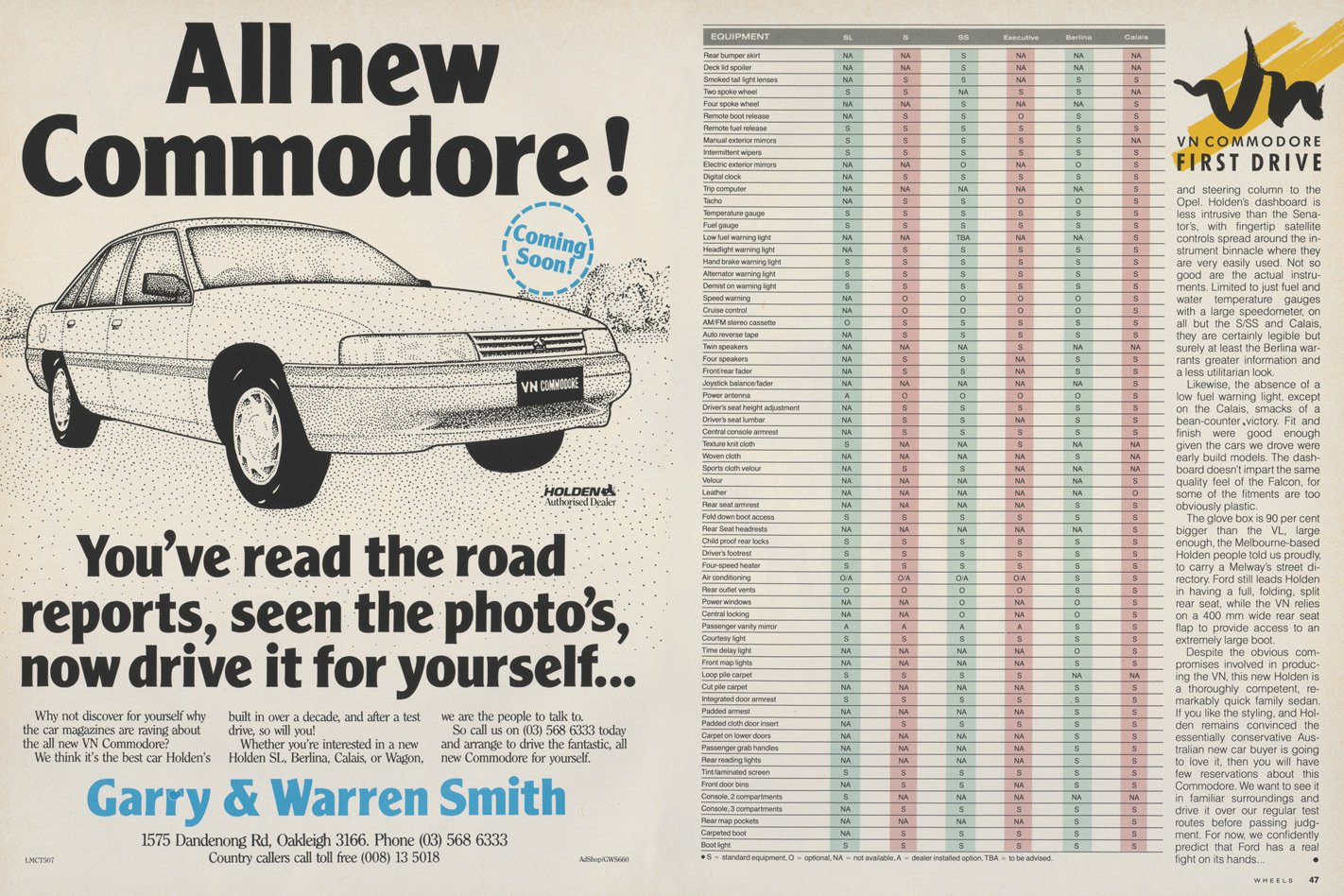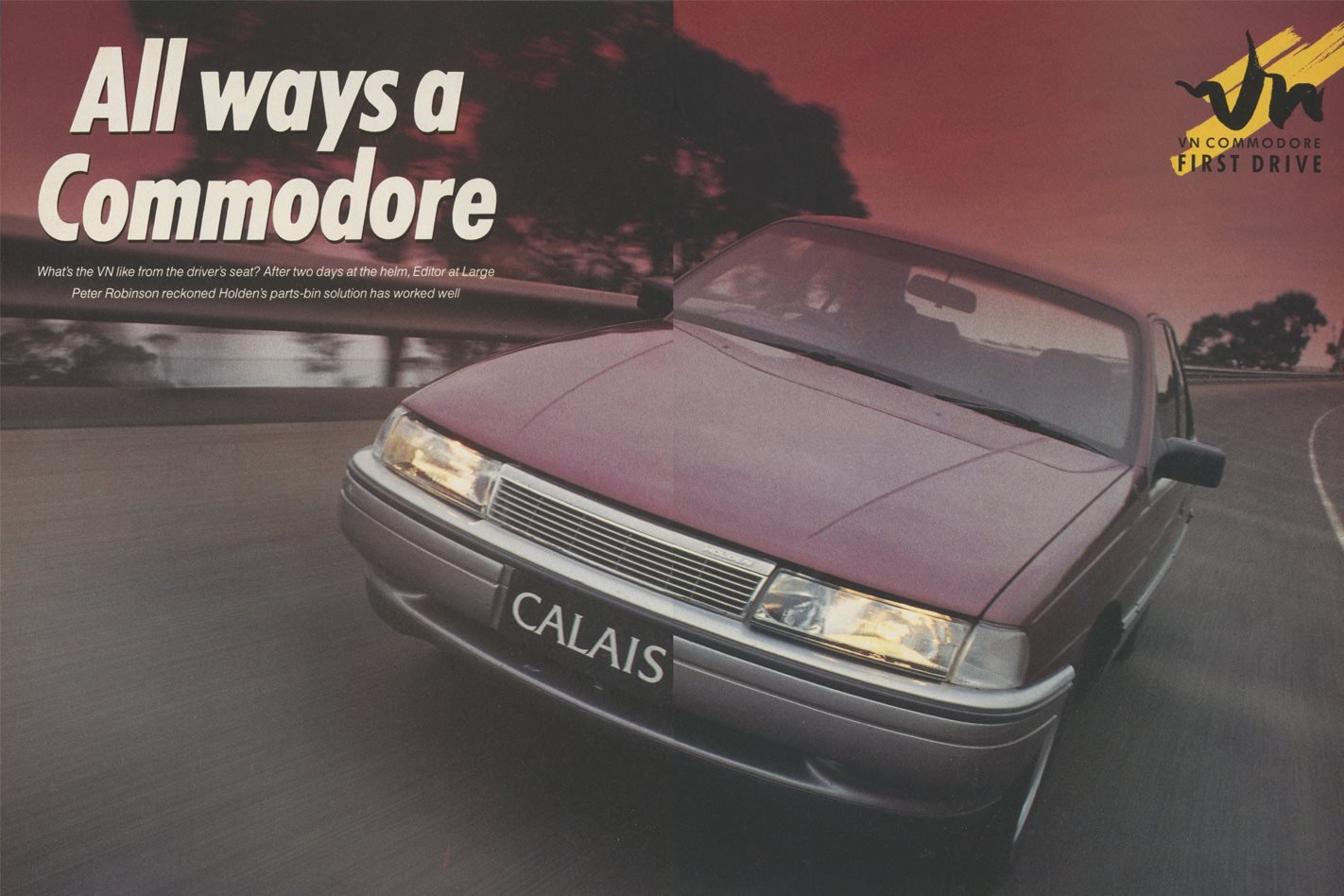HANDS CAN at last be laid on the new VN Commodore. And it is, as expected, an intriguing, yet very effective amalgam from GM’s vast world parts bin, with enough Australian content to ensure it is unique.
So don’t let appearances deceive you , under that rounded , aerodynamically efficient, yet somehow bland, styling lies a floor pan and suspension that will be routine to every mechanic who has ever toiled over Holden’s mainstream model. Yet, so abundant and obvious are the changes, that we expect the average punter will believe this Commodore is all-new.
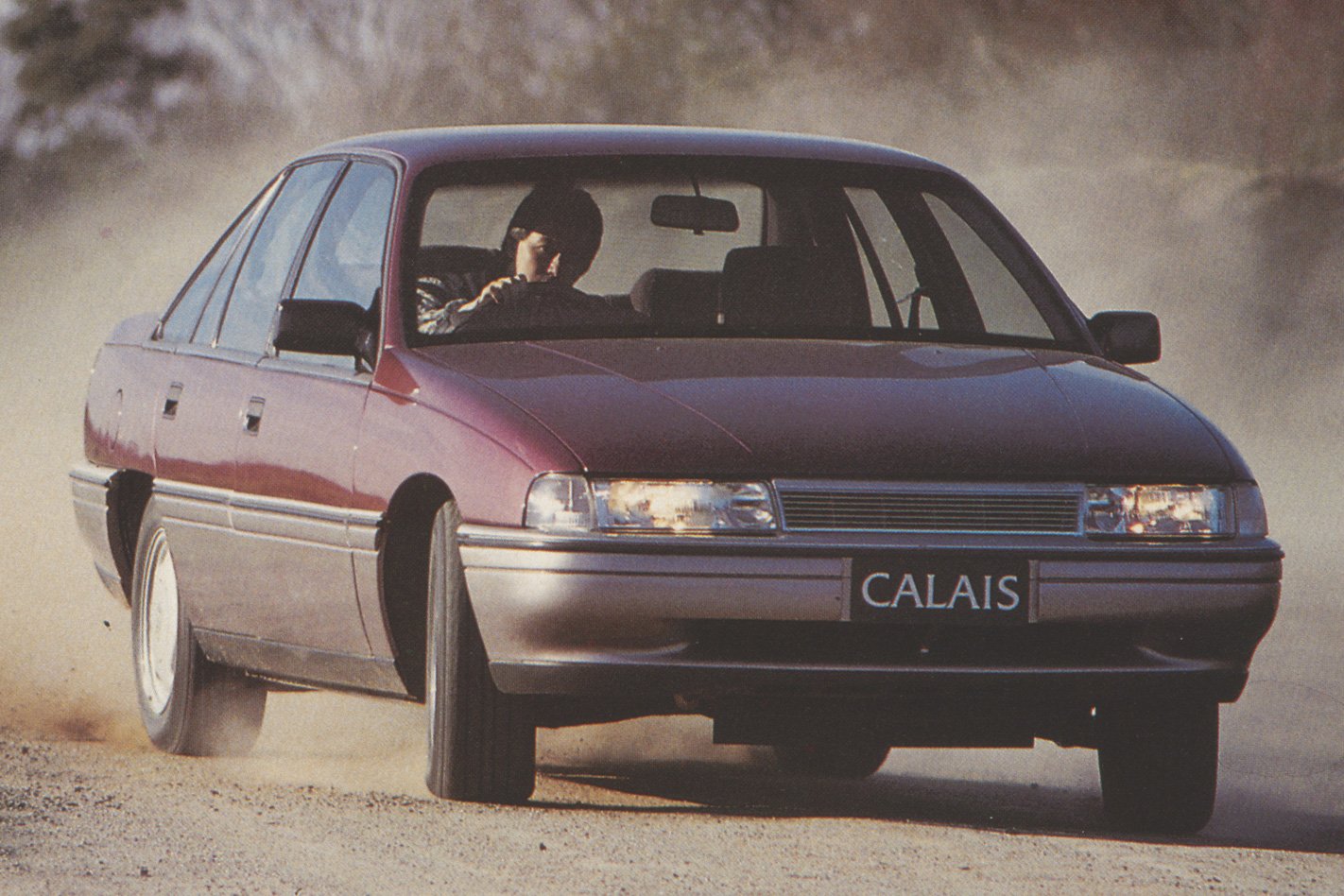
Dynamics are demonstrably improved, but still thoroughly familiar in feel. The VN is unmistakably a direct descendant of the Commodore family. Faced with knowledge that Ford’s ’88 Falcon would be at least as big as the previous model, Holden knew it had to make a more spacious car if the Commodore was to have any chance of regaining the much sought after number one spot at the top of the sales charts. How Holden’s product planners convinced the bean counters to spend $200 million in matching the new German Omega/Senator styling to the VL’s underbody is a story in itself.
What we’re interested in here is the result. After two days driving a variety of VNs at Holden’s Lang Lang proving ground, and on the demanding roads of South Gippsland, we say Holden’s parts-bin solution works. More important perhaps, VN is the stepping stone to a wide variety of models that will give Holden the ability to tackle Ford model for model, just as it did in the days of the HO-HZ.
First, the good news. Buick’s port fuel-injected, 125 kW, V6 engine, with no overhead camshaft nor four valves per cylinder in sight, not only delivers exceptional performance, but is far smoother than we expected based on experience with the pre-’88 American V6. It lacked the counter rotating balance shaft now fitted.
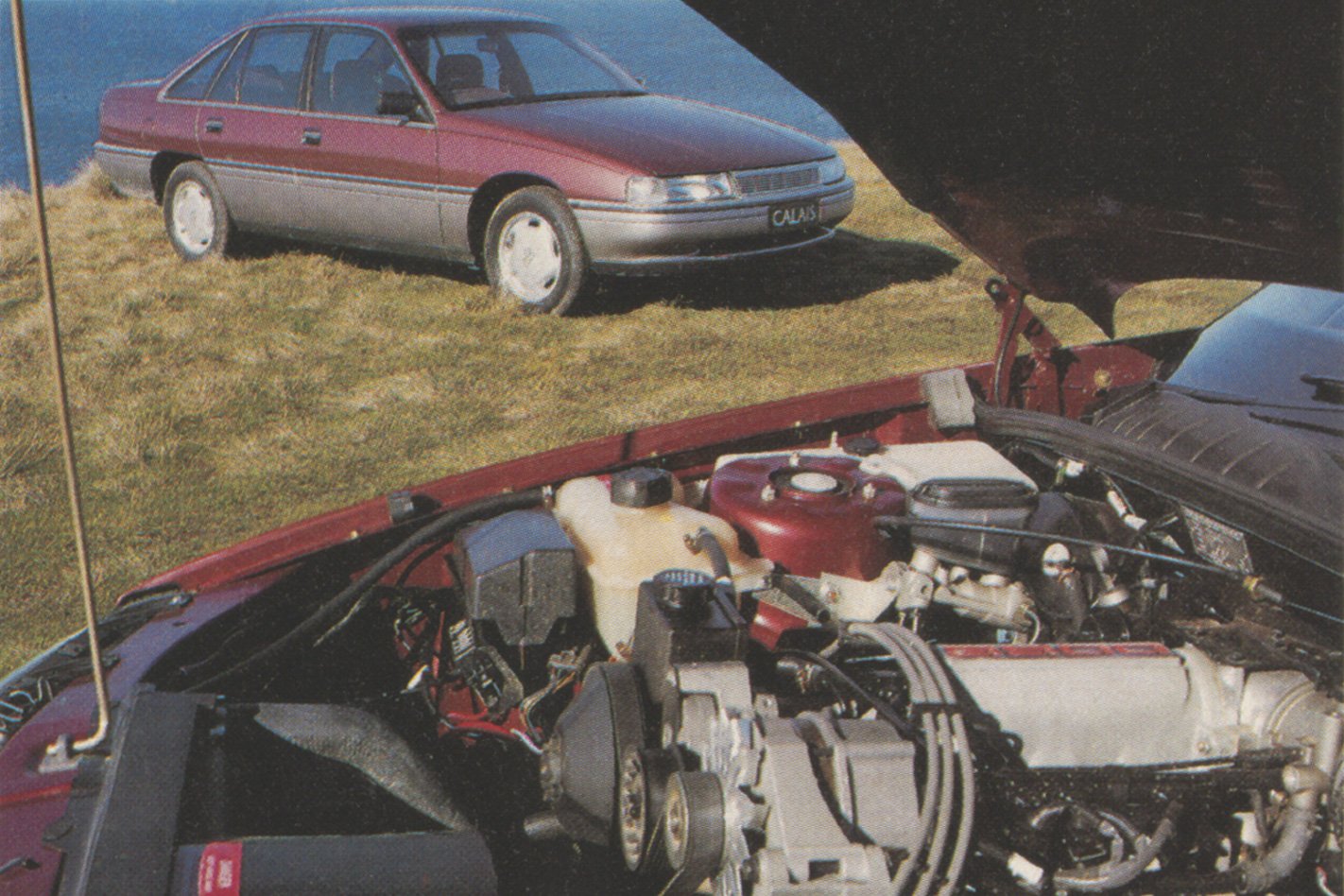
So, instead of the high-revving character that enthusiast drivers enjoyed with the VL, the new Holden Commodore has more of the low and mid-range torque traditional Holden buyers will welcome. Maximum power of 125 kW is developed at 4800 rpm, 400 rpm below the Nissan engine, while the redline is 5600 rpm, though there is a sudden cut-out at 5400 rpm, which is 800 rpm lower than the redline on the overhead cam Nissan.
If the engine rocks noticeably on its hydraulic mounts as the grinding starter motor fires up, it soon settles down to a quiet idle, with little exhaust note to indicate a “V” layout. Throttle response is excellent. There’s enough sheer bottom-end grunt to spin the wheels under maximum acceleration.
Independent rear suspension is being developed for the long wheelbase luxury car, due to be released in about a year as the Statesman. So potent is the V6 that the IRS must filter through to ordinary Commodores as soon as possible, to give the traction necessary to tame the engine’s bottom-end muscle.
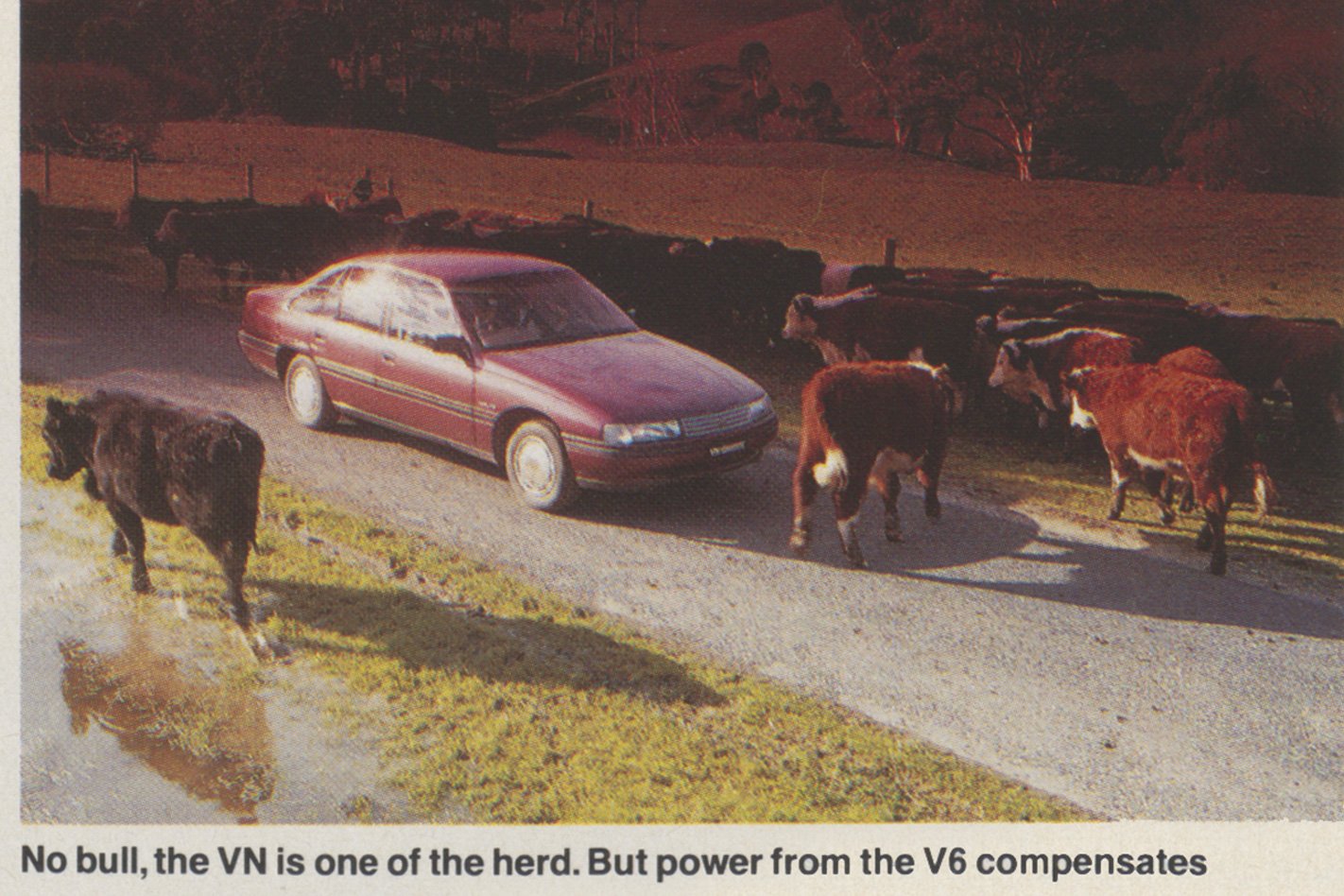
It’s obviously a punchy motor with enormous potential. Already it’s been turbocharged in the USA to produce the fastest accelerating American car, Buick’s old Grand National. There are plans, too, for a supercharged US version early in the ’90s.
For Australians, there will be a more powerful fuel-injected V8 in the VN, expected to be released along with the sporting S and SS models next February. The V8 will be optional across the range, though in reality, only those who race at Bathurst on the first Sunday in October are going to have a real need for the V8’s level of performance.
Let the figures do the talking. Standing 400m: 15.6 seconds, rest to 100 km/h 7.6 seconds, 100-130 km/h in third gear: five seconds dead, top speed: 205 km/h. Remember, this is for the basic 3.8 litre engine offered in every Commodore.
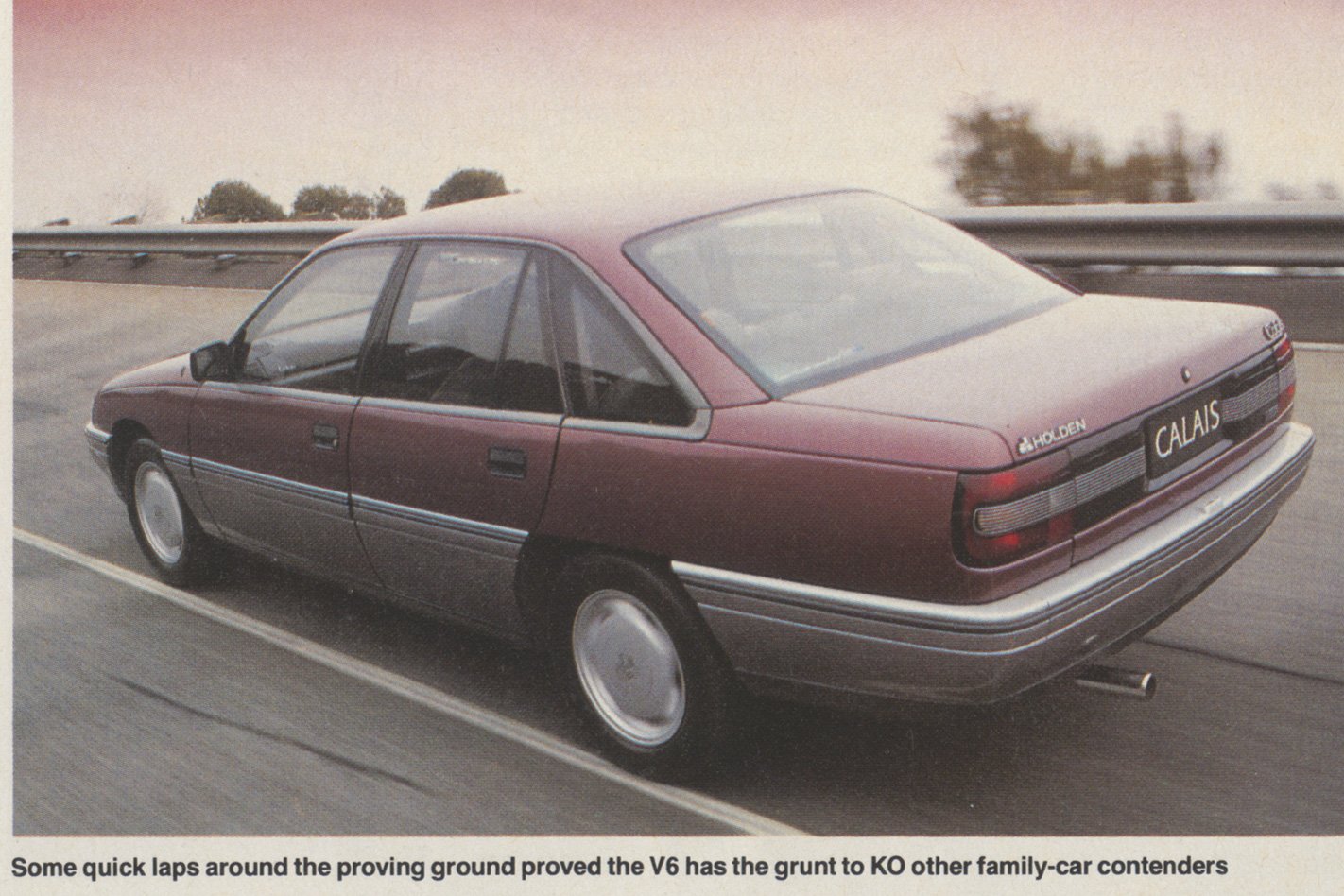
Compared with the VL, which was always considered to have excellent acceleration, the new car is superior in almost every way. The VN is 1.2 seconds quicker between 100 and 130 km/h in third, and a staggering 8.3 seconds faster in fifth gear over the same 100-130 km/h segment.
Borg Warner’s excellent T5 five speed gearbox, previously used on the Group A Commodore, in various Brockmobiles and now on the EA Falcon, doesn’t mate to the V6 quite as successfully. The V6 has only previously been used with automatic transmission, so the adaptation to a manual gearbox has been carried out in Australia. Five speed VNs were in short supply at the long lead release and one of these was involved in a minor accident (no, not with Wheels at the helm) which may have pushed the drive train out of alignment.
Despite this reservation, it seems there’s still some development work required to eliminate drive line snatch and a touch of harshness. The gear change itself is light with a pleasant firmness and a positive, rather than heavy, clutch action.

Holden’s decision to retain the same basic suspension means we don’t get the Opel’s negative scrub radius, all independent system, but this doesn’t mean the blokes from Fishermens Bend have been idle. Drive the VN back to back with the VL and you will be impressed by the extent of the improvement. The new car is more relaxing at any speed , faster in ultimate terms and more predictable, while the body stays flatter. The nervous behaviour that some drivers found intimidating on pre-VL Commodores has gone. The VN can be driven extremely quickly and flatters the indiscreet with mild, consistent understeer and high levels of adhesion.
Holden’s decision to import the excellent four-speed, Turbo-Hydromatic 700 automatic- used in the USA on the Corvette, Firebird and Camara – instead of waiting for BorgWarner’s local four-speeder is vindicated by the acceleration times and its silky smooth operation. The extra ratio gave Holden’s engineers the chance to use a lower first gear, for more rapid acceleration from rest, while retaining a long overdrive fourth for relaxed cruising . Ford’s compromise gearing is shown up in all its inadequacies for while first gear on the VN produces 12 km/h per 1000 rpm, the Falcon has to cope with an extremely high 17.6 km/h. The result is that the Holden rockets away from rest and reaches 50 km/h in just 3.0 seconds while the Falcon in its Fairmont Ghia form takes 4.2 seconds with the multi-point engine, and 3.9 seconds with the basic throttle body engine fitted to the vast majority of EAs. VN automatics cover the standing 400m in only 16 seconds, while the EA Falcon with throttle body engine takes 17.5! Clearly, the Commodore has a performance edge that Ford can’t hope to answer until the four speed auto arrives, early in ’89.
Commodore wind noise is low too, much lower than the Falcon, and engine noise has diminished sufficiently to produce a wonderful high speed touring car. The Turbo 700 slips gently from one gear to another even under maximum power, while kickdown is instantaneous and just as smooth. Sensitive drivers will also detect the torque converter locking up at around a low 70 km/h in fourth and on small throttle openings.
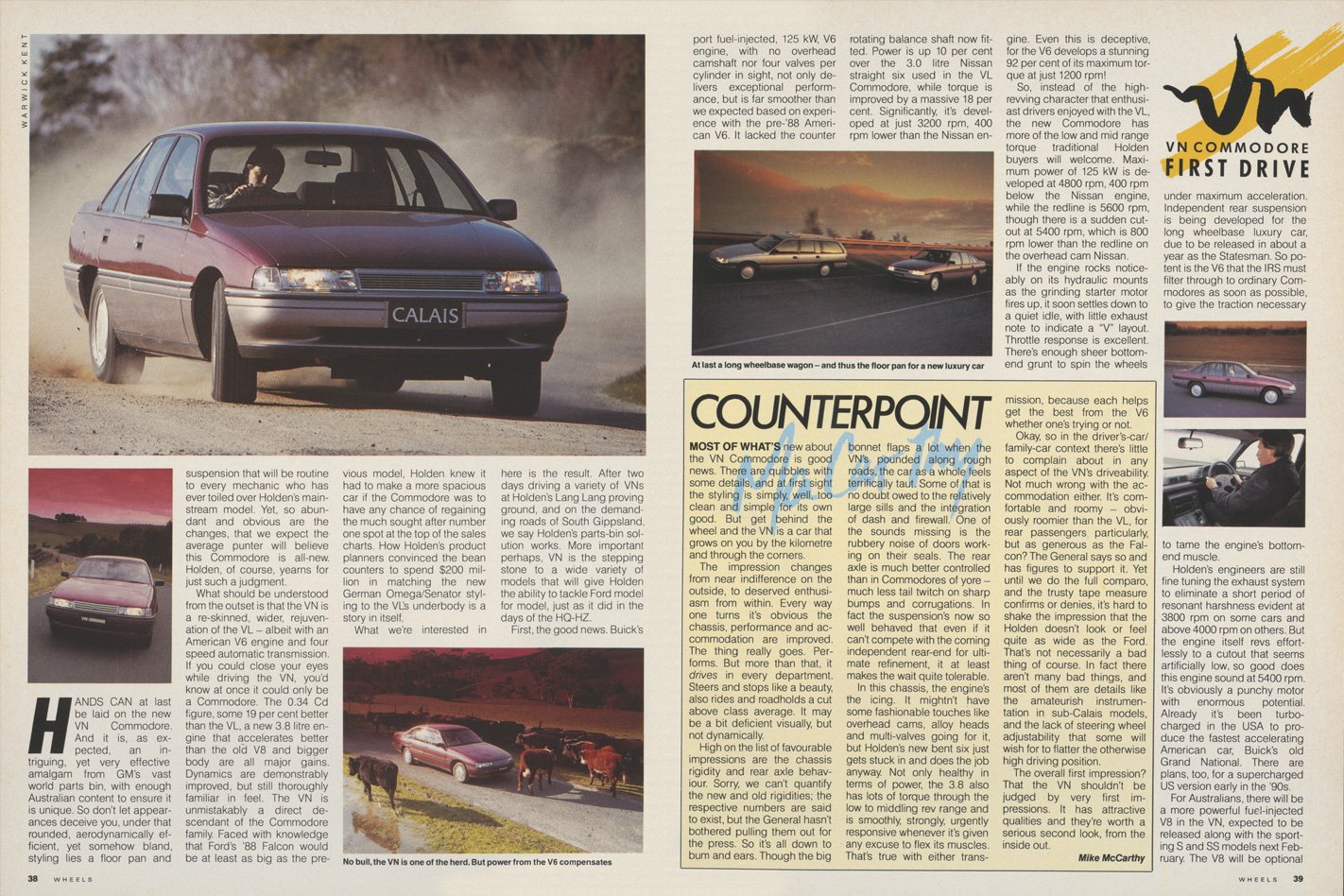
Locating the front anti –roll bar to the MacPherson strut has given more than 50 per cent greater roll stiffness and improved turn-in response, while the diameter of the rear anti -roll has been increased to provide more rear roll stiffness. Springs are softer, dampers stiffer at low velocities and the ride is more comfortable, quieter and better isolated.
Power steering is now standard equipment on all but the fleet SL model, which is intended not for private buyers, but government departments. Essentially the VL’s variable ratio rack and pinion system, with engine speed-related assistance, has had only minor changes to improve feel at speed. Few will find anything to criticise regarding the steering, for it is light, with linear response, accurate enough for the enthusiast, without being too fast for the more sedate motorist. Despite the increase in wheelbase, there has been a slight reduction in turning circle to 10.4 m.
What annoyed most Wheels drivers was the size of the steering wheel. Holden claims, quite rightly, that the inner diameter of the new two-spoke wheel is the same as the VL wheel, but with a thicker rim, the actual diameter is greater. In shape the wheel reminds us of the bulky affair fitted to the Rover SD1. Calais buyers get an attractive four-spoke wheel modelled after the Opel Senator.
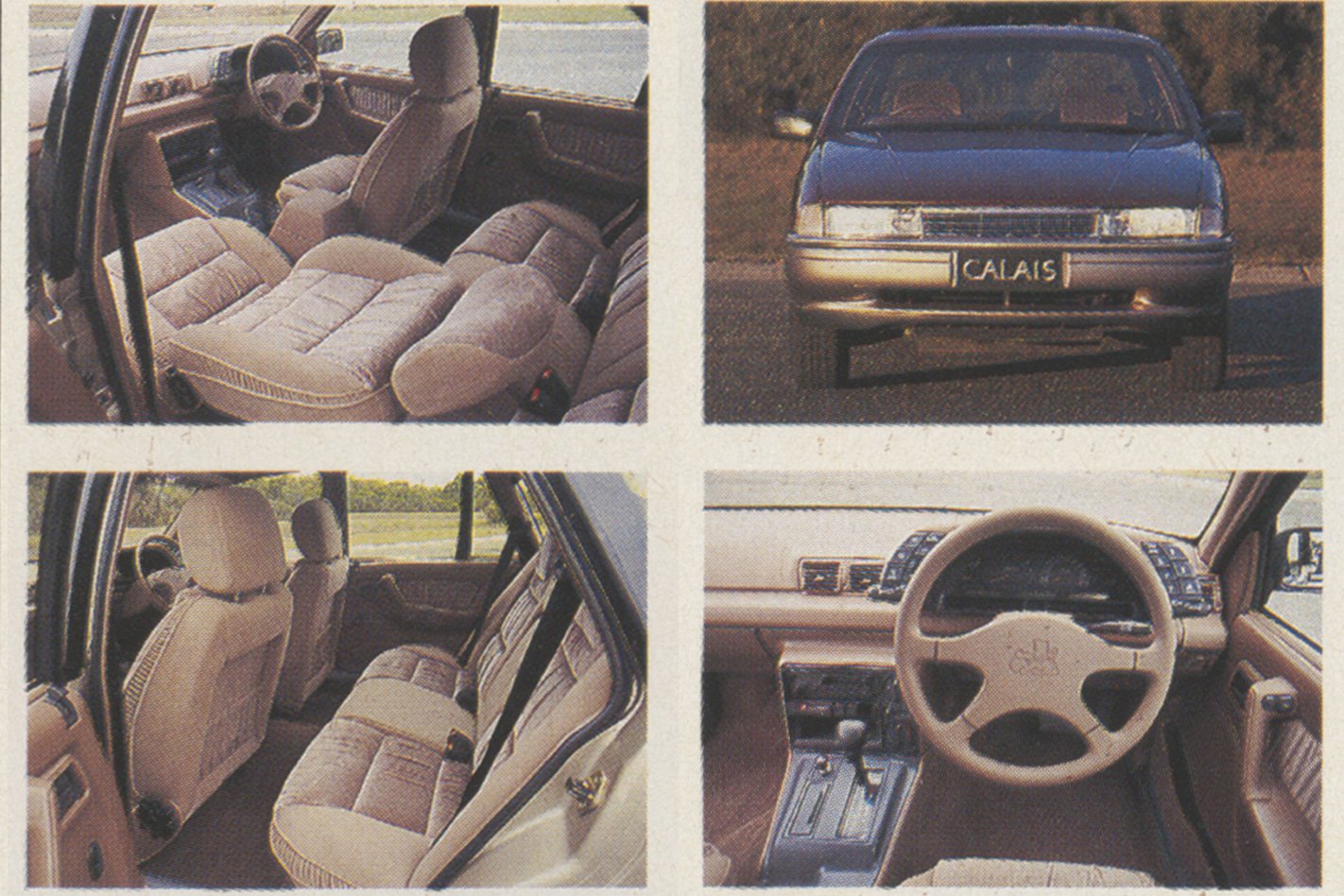
Four wheel disc brakes are standard across the range for the first time on the Commodore. Pedal pressures are light without any sponginess and the action progressive. Commodores equipped with the five-litre V8, Police Pack or the S option use bigger diameter front discs and Corvette-type finned calipers. Anti-lock brakes are still in the future, although they’re fitted as standard to some Opel models.
Beyond even the engine and its performance the symbol of this new Holden is plainly the body. Holden has gone to great lengths to match the Falcon in interior dimensions while utilising some, if not all, of the benefits of the new Opels. Compared with the VL, the wheelbase has been extended by 63 mm to 2731 mm. Overall length has been increased 84 mm to 4850 mm. Exterior width has gone up by 72 mm, but the curved body means there is even more shoulder room than the figures suggest.
In profile, this car is almost pure Opel, combining the six-window glass house of the Senator with the squared-off rear wheel arch of the Omega. The tear drop shape, with its modern flush side glass, is clearly evident in profile and the cockpit appears substantial in much the same way as a Fairlane. But instead of the cross-hatch oval grille that gives the Senator a distinctive character, Holden has opted for a bland nose that has little presence and looks impotent in the rear vision mirror of another car. There is nothing distinctive about the grille, nothing we haven’t seen many times before. By retaining the same front track as the VL, even after adding 38 mm to the floor pan, the front wheels look skinny and too far inboard of the body, suggesting the VN is standing on tip-toes. At the rear, too, and despite the best endeavours of the Holden design team to reduce the Opel’s taper and square off the corners, the VN doesn’t create a feeling of width.
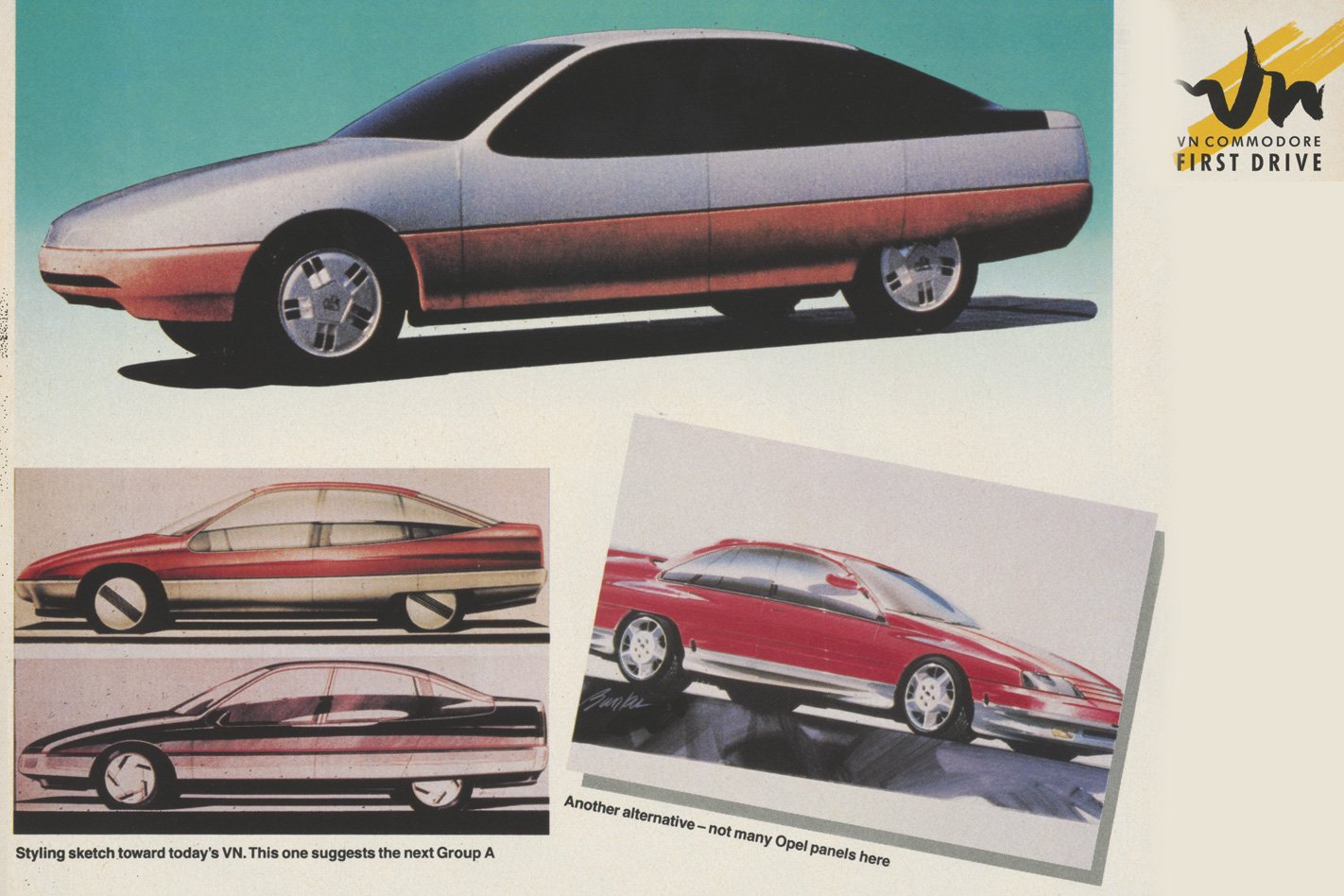
Limited to just fuel and water temperature gauges with a large speedometer, on all but the S/SS and Calais, they are certainly legible but surely at least the Berlina warrants greater information and a less utilitarian look. Likewise, the absence of a low fuel warning light, except on the Calais, smacks of a bean-counter. victory. Fit and finish were good enough given the cars we drove were early build models. The dashboard doesn’t impart the same quality feel of the Falcon, for some of the fitments are too obviously plastic.
The glove box is 90 per cent bigger than the VL, large enough, the Melbourne-based Holden people told us proudly, to carry a Melway’s street directory. Ford still leads Holden in having a full , folding, split rear seat, while the VN relies on a 400 mm wide rear seat flap to provide access to an extremely large boot.
Despite the obvious compromises involved in producing the VN, this new Holden is a thoroughly competent, remarkably quick family sedan. If you like the styling, and Holden remains convinced the essentially conservative Australian new car buyer is going to love it, then you will have few reservations about this Commodore. We want to see it in familiar surroundings and drive it over our regular test routes before passing judgment. For now, we confidently predict that Ford has a real fight on its hands…
